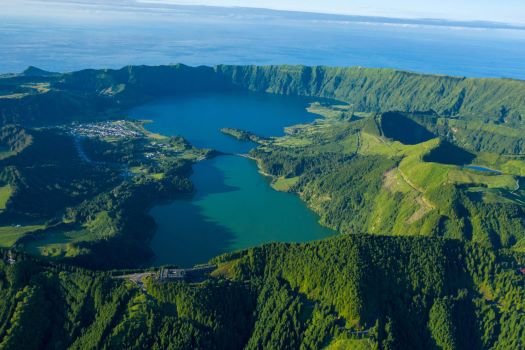Portugal has seen a marked increase in the number of municipalities implementing tourist taxes, with six new municipalities on São Miguel Island now applying these fees. This brings the total number of Portuguese municipalities charging a tourist tax to at least 40, affecting visitors across the country. This trend is expected to have a significant impact on both the tourism industry and the experiences of travelers visiting Portugal, especially those accustomed to more affordable stays.
Tourist Tax Implementation in Portuguese Regions
While tourist taxes have been in place in many regions of Portugal, the Alentejo region remains the only area without municipalities that have implemented such fees. However, the city of Évora, which is a prominent destination in the region, has recently taken steps to introduce its tourist tax, with the procedure currently in the consultation phase. This marks the beginning of a broader push to apply these charges to various cities in the region.
As of January 2025, there are 40 municipalities across Portugal that apply a tourist tax. These taxes vary by municipality, with some charging for overnight stays, while others are in the process of finalizing plans to impose such fees in the near future. The general trend indicates that Portugal’s local governments are increasingly relying on these taxes to supplement their tourism infrastructure.
Overview of Tourist Tax Rates in Portugal
Currently, the island of São Miguel in the Azores is the latest to adopt the tourist tax, affecting six of its municipalities, which now require visitors to pay €2 per night for up to three nights. These municipalities include Ponta Delgada, Ribeira Grande, Lagoa, Vila Franca do Campo, Povoação, and Nordeste. This tax is expected to contribute to maintaining and improving tourism facilities in these popular destinations.
In Madeira, seven out of 11 municipalities charge a fee of €2 per night for up to seven nights. The municipalities that currently implement this tax include Funchal, Santa Cruz, Santana, Ponta do Sol, Machico, Ribeira Brava, and Calheta. Meanwhile, three municipalities, Câmara de Lobos, São Vicente, and Porto Santo, are planning to introduce this tax in 2025. Notably, in Madeira, Funchal also imposes a €2 fee on visitors arriving via cruise ships.
Municipal Variability and Exceptions
Each municipality across mainland Portugal has the discretion to set its own rates for the tourist tax, leading to variability in the amount charged. Common standards across these municipalities include exemptions for children, with most municipalities charging the tax only to visitors over the age of 12. People with disabilities or those receiving medical treatment are also exempt from paying this fee in most cases.
Some municipalities, including Porto and Caminha, offer exemptions for visitors participating in religious pilgrimages to Fátima or Santiago de Compostela. Furthermore, Viana do Castelo offers exemptions for displaced persons seeking refuge from conflict, adding another layer of consideration for those in need.
Impact of the Tourist Tax on the Travel Industry
The introduction of the tourist tax in these municipalities, while contributing to local economies, has sparked a conversation about the effects on tourism. On one hand, these taxes help generate funds that can be reinvested into local infrastructure, public services, and tourism initiatives. However, for travelers, especially those on a budget, the added cost could lead to reduced visits or shorter stays in affected destinations.
The varying rates, ranging from €1 to €4 per night, mean that visitors must consider these charges when planning their trips. Cities such as Lisbon, which began charging €1 per night in 2016 and raised this rate in 2019, have doubled the tax in recent months. Lisbon now charges up to €4 per night, which can significantly increase the cost of a stay for those planning longer trips. Additionally, the tax for cruise ship passengers arriving in Lisbon adds another financial burden for travelers arriving by sea.
Tourist Tax Implementation and Its Global Effect on Travelers
As Portugal joins the growing list of European destinations introducing tourist taxes, the trend may have broader implications for travelers. Countries across Europe and beyond are increasingly implementing such fees, which could lead to a more standardized approach to taxing visitors. While these taxes help support local economies, they also raise the overall cost of travel.
Travelers from across the globe may need to adjust their budgets and plans when visiting multiple destinations with such taxes. These fees could also impact travel decisions, with some travelers opting for less expensive destinations that do not impose these charges.
A Shift in the Travel Landscape
With Portugal’s widespread implementation of tourist taxes, travelers will need to adapt to the changing landscape of tourism in the country. While these taxes support local economies and infrastructure, they also represent an added cost for visitors. The trend of tourist taxes in Portugal highlights a larger shift in global tourism, where sustainability and local investment are becoming increasingly important in the face of growing visitor numbers.
The post Portugal’s Booming Tourist Tax Initiative 40 Municipalities Now Charging Fees, Signaling a Surge in Local Revenue and Potential Impact on Travelers appeared first on Travel And Tour World.


